Machine translation has matured to become a valuable technology for businesses needing to translate large amounts of content quickly and efficiently. PTIGlobal leverages AI (Artificial Intelligence) + MT to ensure rapid turnaround times and scalability for high-volume translation projects.
Our MT output is refined by human post-editing (PE), performed by professional, experienced native-speaking linguists to produce final polished translations.
Experience the power of machine translation in driving scalability with PTIGlobal’s well-known standards of linguistic quality.

Machine translation (MT) is an ideal solution for businesses across multiple industries looking to scale their global reach while maintaining speed and accuracy in translation.
At PTIGlobal, we understand that different industries have unique language challenges and requirements. By combining cutting-edge AI with human expertise, our machine translation services offer industry-specific solutions that ensure both precision and cultural relevance.
By utilizing PTIGlobal’s machine translation services, companies across these industries can ensure their content is globally accessible while meeting the standards of quality required in their specific fields.
Here at PTIGlobal, we combine the speed of machine translation with the precision of human expertise. Our MT process is designed to ensure both accuracy and efficiency in delivering high-quality translations in over 30 languages. Here’s how our process works:
The first step in machine translation is feeding the source text into the MT engine. This can be any kind of text, from website content to technical manuals, product descriptions, or multimedia subtitles.
PTIGlobal uses Neural Machine Translation (NMT), the latest in machine translation technology. NMT works by mimicking how the human brain processes language, considering entire sentences rather than just individual words. This allows the engine to produce more contextually accurate translations. NMT uses deep learning algorithms to analyze the structure, syntax, and semantics of the text, ensuring that the translated output closely mirrors the original meaning.
One of the key strengths of NMT is its ability to understand context. Instead of translating word-by-word or phrase-by-phrase, NMT looks at the entire sentence or even paragraphs to ensure the translated text sounds natural. This helps to avoid common issues such as misinterpretations of idiomatic expressions or words with multiple meanings.
Each language pair (for example, English to Spanish or Chinese to German) has specific rules, grammar, and syntax. Our MT systems are customized to handle these unique challenges and can be fine-tuned to match specific industries or subject matter by supporting over 140 language pairs. For instance, the terminology used in legal documents differs significantly from that in a marketing brochure. Machine learning models used in MT are constantly evolving as they process more text data, improving their output over time.
After the machine generates the translation, PTIGlobal takes the critical step of applying human post-editing (PE). This involves our team of native-speaking linguists reviewing the machine-generated translation for any inaccuracies, awkward phrasing, or cultural mismatches. The post-editing process ensures that the final output is not only linguistically accurate but also culturally appropriate for the target audience.
Machine translation systems learn and improve over time. As the engine processes more data and receives feedback from post-editors, it becomes more adept at handling industry-specific terms and complex language structures. PTIGlobal leverages this capability by maintaining and managing client-specific translation memories and glossaries, ensuring that the machine’s output becomes more refined with each project.

Raw machine translation often requires refinement to meet professional standards of accuracy and cultural relevance. That’s why our MT output is enhanced by human post-editing (PE), carried out by our team of native-speaking linguists who have extensive experience in the industries we serve.
While machine translation ensures speed, post-editing ensures quality. Our post-editors review and refine the machine-generated translations to achieve linguistic accuracy, consistency, and tone. This hybrid approach allows us to deliver high-quality translations that are culturally appropriate and free of errors, guaranteeing that your content resonates with global audiences while retaining its original meaning.
PTIGlobal stands out as a leader in machine translation services due to our combination of AI technology and human expertise. Here’s why businesses trust us for their machine translation needs:
If you’re looking for a reliable partner to handle your machine translation and localization needs, PTIGlobal is here to help. Whether you need assistance with multimedia translation, website localization, or high-volume content translation, our team is ready to deliver high-quality results.
Contact us today to book a demo or learn more about how PTIGlobal can support your global expansion efforts through cutting-edge translation services. Let us help you communicate effectively with your international audience.
Machine translation can handle a wide variety of content, including websites, product documentation, legal documents, marketing materials, multimedia subtitles, technical manuals, e-learning, and training material. However, content that is extremely creative, highly scientific, or exposed to liability claims may call for 100% human translation and edit.
The accuracy of machine translation engines vastly improves when they are trained to recognize and translate industry-specific terminology. PTIGlobal uses custom glossaries and translation memories tailored to your industry to ensure that terms are consistently and correctly translated across all content.
The main difference is speed and scalability. Machine translation allows for rapid processing of large amounts of text, making MT ideal for sizable projects. Human translation, while slower, is more nuanced and precise. PTIGlobal bridges these two approaches with post-edited MT, combining speed with linguistic accuracy.
Yes, machine translation can manage multiple language pairs within the same project, but not all engines perform equally across every language. Through extensive testing, we’ve found that some engines excel in specific regions or language families, such as Asian languages, while others are optimized for a single language or specialized terminology. Our team leverages the strengths of multiple translation engines to ensure the best quality for each target language. If other providers aren’t discussing this, it’s worth asking whether they’re truly delivering the best results for your global needs.

